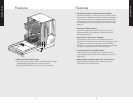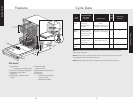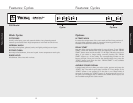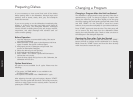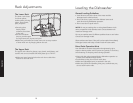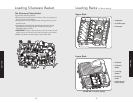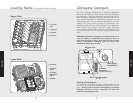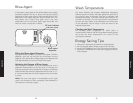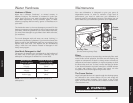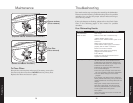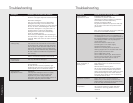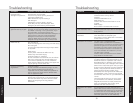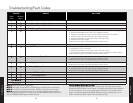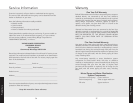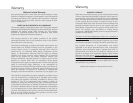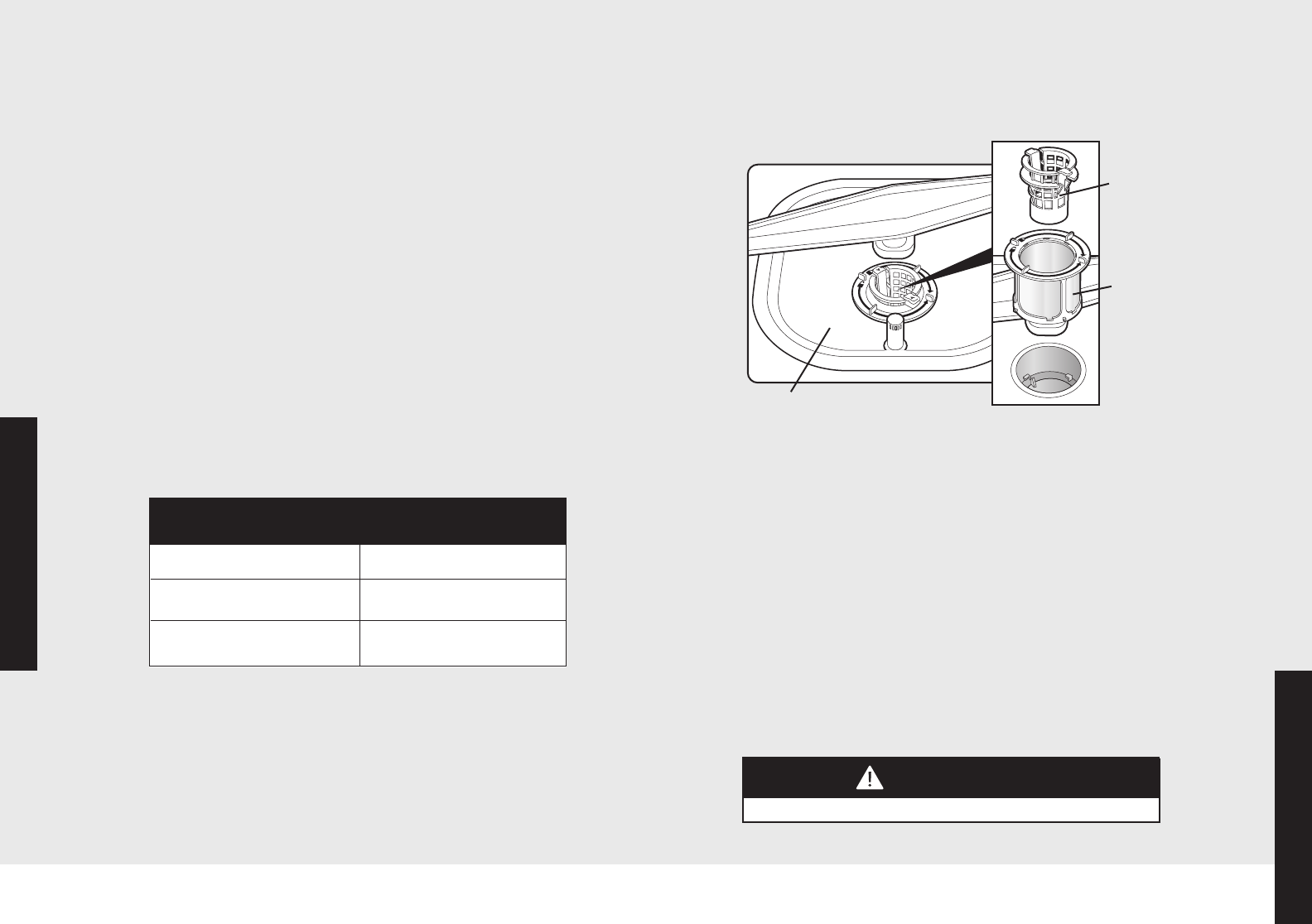
27
26
Operation
Hardness of Water
Water has a different “hardness,” or mineral content, in
different locations. The hardness is measured in grains per
gallon (gpg). Find out your water’s hardness by asking your
local water department, county extension agent, or water
softening company. Ask how many “grains” of hardness are in
your water.
The harder the water is, the more detergent you need. For the
detergent amounts recommended for use in your location with
your water, follow the guidelines in the chart. With hard water,
you need more detergent to get dishes clean. With soft water,
you need less.
Too much detergent with soft water can cause “etching,” a
permanent cloudiness of glassware. If you have hard water, the
dishes as well as the dishwasher itself may accumulate a gray
deposit after some time. This deposit can be remedied by
using a mild citric acid solution instead of detergent in the
heavy wash program.
How Much Detergent to Use?
The amount of detergent you use depends on the hardness of
the water and on the cycle you select. Generally, only one
tablespoon of detergent is needed for a normal load.
NOTE: Line level on detergent dispenser represents 2
tablespoons.
Maintenance
Water hardness Amount of detergent
(
grains per gallon) (powder or liquid)
Soft water 1 tablespoon per cup
0-3 gpg (15ml)
Medium hard water 2 tablespoons per cup
4-8 gpg (30ml)
Hard water 3 tablespoons per cup
9-above gpg (45ml)
Water Hardness
Your new dishwasher is designed to give you years of
dependable service. In order to maintain a high level of
performance, you need to make sure your dishwasher is
properly cared for and cleaned. Here are a few things you can
do to make sure your dishwasher performs at its highest level.
Filters
The filters are important, because they continuously filter wash
water. Under normal operation, the filters are self cleaning and
require no maintenance. If there is a heavy amount of food soil,
sediment or hard water conditions, it may be necessary to clean
the filters after each use. To clean, remove the filters as shown
in the above illustration and soak overnight in a 50/50 solution
of water and vinegar. Citric cleaner and water are also
acceptable. Filters should appear bright when clean.
The Coarse Strainer
Large food particles that can’t pass through the drainage pump
are collected in the coarse strainer. Lift out and empty the
coarse strainer when necessary. Don’t forget to put it back
again. It is normal for a small amount of water to remain in the
coarse strainer area.
Fine
filter
Coarse
strainer
Primary Filter
(Do not remove primary filter)
WARNING
Never operate the dishwasher without the filters in place.
Product Care



